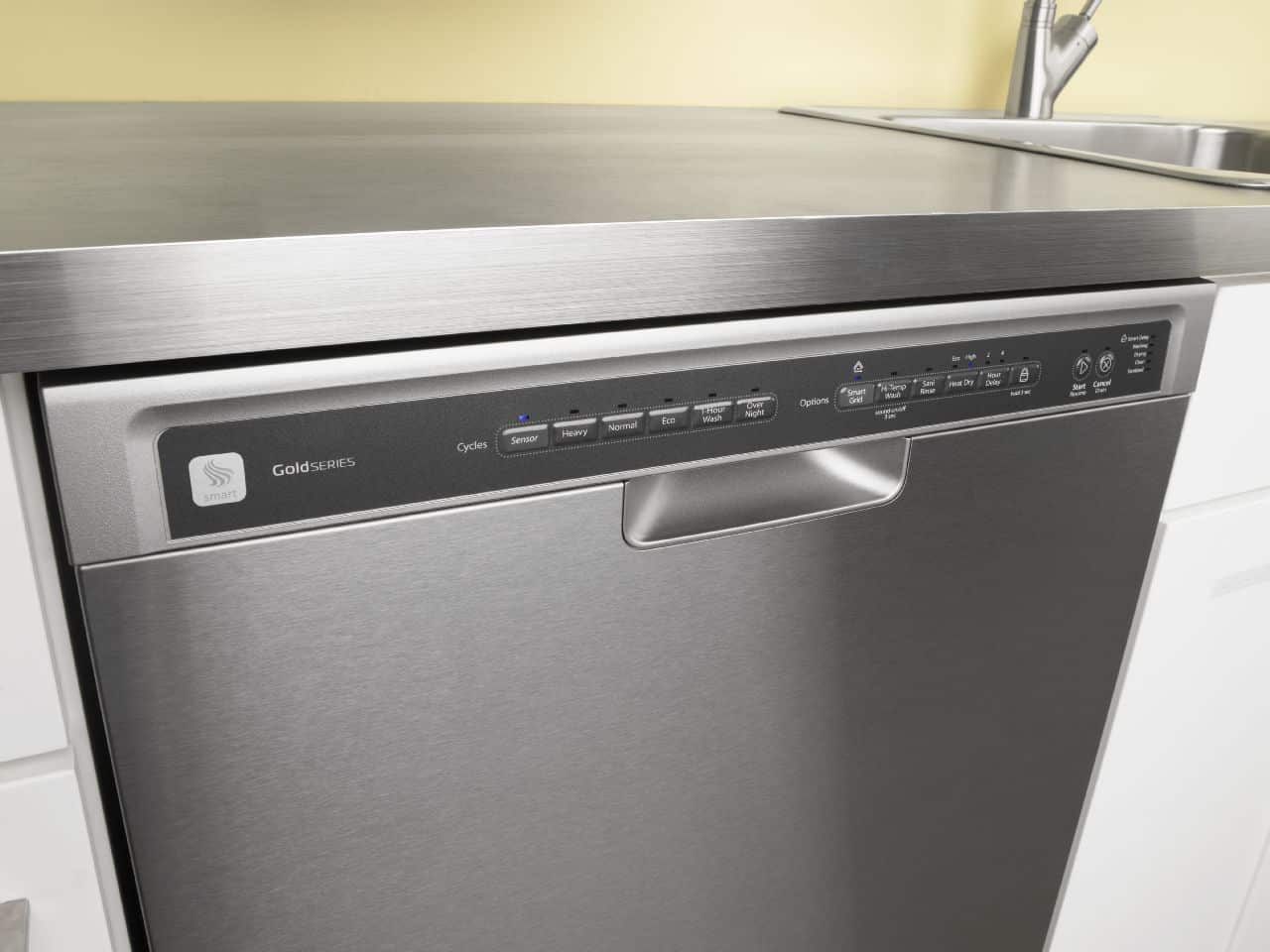
There will be times when you absolutely must call a dishwasher repair service. Yet, even for those who aren’t too mechanically inclined, believe it or not, there are some things you can do.
Zip! Zap! Sizzle!
Those are the sounds of burning hair and burning skin you’ll no doubt hear if you don’t take the proper precautions to ensure your personal safety. Dishwashers contain a water heater and internal motors that retain residual electricity putting the do-it-yourself-er at risk of a shocking experience. Disconnect the dishwasher from its power source before you begin to clean or work on it. If you don’t take this easy precaution, you may need to call an ambulance instead of an appliance repair service.
Tilt! Lean! Slant!
Recently you had your kitchen floor re-tiled. A few days later, the dishwasher sprung a leak. One reason might be that the new tile floor formed a new angle for your dishwasher. As a result, the dishwasher tilts to one side or the other. The slant is not obvious. But the puddle on the floor is evidence enough that something is wrong. Place a bubble level on the inner edge of the dishwasher. If it shows that the dishwasher is not level you may be able to correct this by raising or lowering the feet.
Neglect or Inspect?
That is the question. In the case of most appliances, simple cleaning and regular maintenance will avoid pointless repairs. Some problems are avoided with a visual inspection of the rubber gasket around 3/4 of the door. The gasket does not cover the bottom to allow air flow. Open the dishwasher door and examine the gasket for any wear and tear, worn areas, cracks or general deterioration. Good news! This is a part that most people can replace. If your dishwasher needs a new gasket you can call Fred’s Appliance at 888-453-7337 or order one online. The new gasket is very stiff. Before installing, soak the gasket in hot water to help make it more manageable to install.
Prevent Impediment and Sediment
Lately, you’ve noticed the dishes are not as clean as before. Spotted and streaked and even a hardened piece of last night’s supper is stuck to a plate. Yuck! You wonder how this could be. When was the last time the spray arm was cleaned? The sprayer contains many small holes that emit water to power wash and rinse the dishes. Over time, these holes tend to clog with food particles, mineral deposits from hard water, and other types of debris. To clean, remove the sprayer arm and soak in warm vinegar for a few hours. This will loosen the crud and sludge and return your dishes to the sparkle and shine you expect.
Rinse, Submerge, Soak
If you own a modern dishwasher, we want you to know you do not need to rinse or prewash the dishes. You will save time, water, and money by eliminating this needless step. One of the greatest features of owning a dishwasher is the overall annual savings on your utility costs. The dishes need to be dirty so the dishwasher’s soil sensor can determine how much water to use and for how long the dishes need to be washed. If the sensor detects little to no soil it may do a lighter than normal cycle leaving encrusted bits of food attached to the dishes. However, it is advisable to scrape large food particles into the trash. After a couple of weeks, you will need to inspect the screens and filters. At the bottom of the inside of the dishwasher is a drain. The drain is covered with a screen designed to capture food particles. That screen needs to be removed, rinsed, and cleaned. Check your owner’s manual for specifics on accessing your filter.
Mold and Mildew
Another reason the dishes aren’t getting cleaned is that the dishwasher itself is dirty. Maybe you’ve cycled through a few hundred loads and gradually you’ve noticed the dishes aren’t as clean as they once were. One helpful solution would be to leave the dishwasher door open allowing the inside to completely dry preventing mold and mildew from growing.
That puddle on the floor? It might be more than a tilting dishwasher. A connection to the water inlet valve might be loose or cracked allowing water to slowly drip on the floor. If replacing the gasket is more than what you care to do, or if this article hasn’t addressed what you’re looking for, contact us today. We look forward to assisting you in any way we can.

How to Fix the nF Error Code on a Samsung Washer

Kenmore Elite Dryer Issues: How To Troubleshoot

Microwave vs. Oven: Pros and Cons and How They Differ

Self-Cleaning Oven Smell: Causes & Odor Reduction Tips

Frigidaire Ice Maker Not Working? 7 Ways to Fix It

Why Is Your LG Refrigerator Not Cooling? (9 Common Reasons)

GE Oven F2 Error: Causes & Solutions

How to Reset the Water Filter Light on a Samsung Refrigerator

Maytag Washer Showing F5 Error Code? Here’s What To Do






